Search Images
Browse Content (p. 1096)
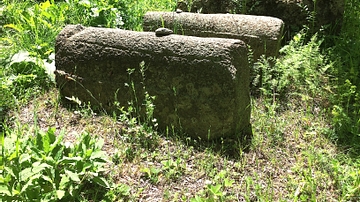
Image
Armenian Jewish Tombstones in Yeghegis
Nearly 40 tombstones from the 13th and 14th century CE survive in the Jewish cemetery, and another 30 are located nearby in Yeghegis, Armenia. The oldest tombstone dates to 1266 CE and the latest to 1337 CE. The dates on the tombstones are...
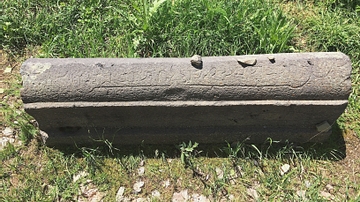
Image
Medieval Jewish Tombstone in Yeghegis, Armenia
Nearly 40 tombstones from the 13th and 14th century CE survive in the Jewish cemetery, and another 30 are located nearby. The oldest tombstone dates to 1266 CE and the latest to 1337 CE. Some tombs have inscriptions in Hebrew or Aramaic...
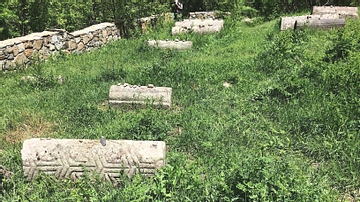
Image
Jewish Tombstones in Yeghegis, Armenia
No historical evidence exists of a Jewish community in Yeghegis, Armenia during medieval times. Indeed, there is also no written record of contemporaneous Jewish communities in medieval Armenia. Nearly 40 tombstones from the 13th and 14th...

Image
Medieval Jewish Tombstones in Yeghegis, Armenia
No historical evidence exists of a Jewish community in Yeghegis, Armenia during medieval times. Indeed, there is also no written record of contemporaneous Jewish communities in medieval Armenia. Nearly 40 tombstones from the 13th and 14th...
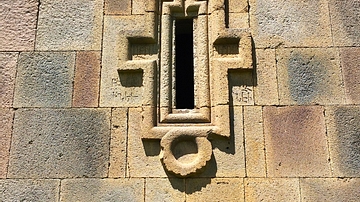
Image
Window and Crosses at Zorats Church
Zorats Church is a church built on a hill overlooking the Yeghegis River in present-day Armenia. The church was built in the early 14th century CE and dedicated by Bishop Stepanos Tarsayitch who was a grandson of an Orbelian prince. Armenia...
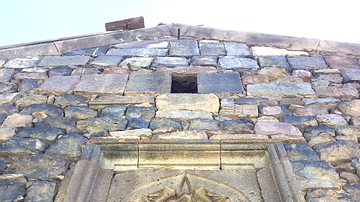
Image
Architectural Detail at Armenia's Zorats Church
Zorats Church is a church built on a hill overlooking the Yeghegis River in present-day Armenia. The church was built in the early 14th century CE and dedicated by Bishop Stepanos Tarsayitch who was a grandson of an Orbelian prince.
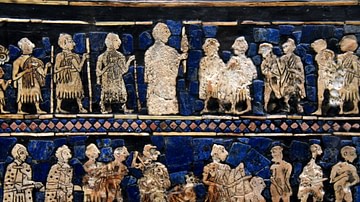
Image
Detail of the War Scene of the Standard of Ur
Detail (middle part of the top and middle registers) of the so-called "War Scene" of the Standard of Ur, a (reconstructed) hollow box, the precise purpose of which is unknown. From the Royal Cemetry of Ur, Ur, Sothern Mesopotamia, modern-day...
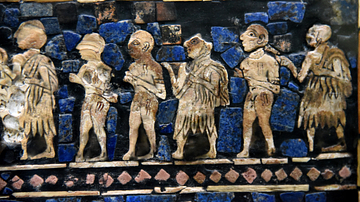
Image
Detail of the War Scene of the Standard of Ur Showing Prisoners of War
This is a detail of the so-called "War Scene" of the Standard of Ur. This detail is the right end of the top register. Sumerian soldiers wearing flounced skirts lead prisoners of wars. The captives are naked and their bodies have wounds with...
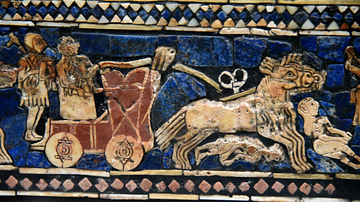
Image
Detail of the War Scene of the Standard of Ur Showing a Galloping Chariot
This is a detail of the so-called "War Scene" of the Standard of Ur from the right half of the bottom register. Here, a four-wheeled chariot is drawn by four galloping equids. The wheels of the chariot are solid and not spoked; around 1800...
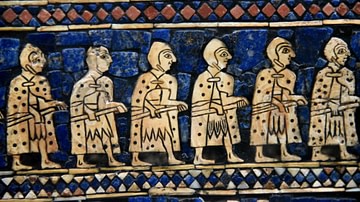
Image
Detail of the War Scene of the Standard of Ur Showing Sumerian Warriors
This is a detail of the so-called "War Scene" of the Standard of Ur. This detail is part of the left half of the middle register. Here, six Sumerian soldiers stand and stride to the right. They wear leather head caps and cloaks as well as...